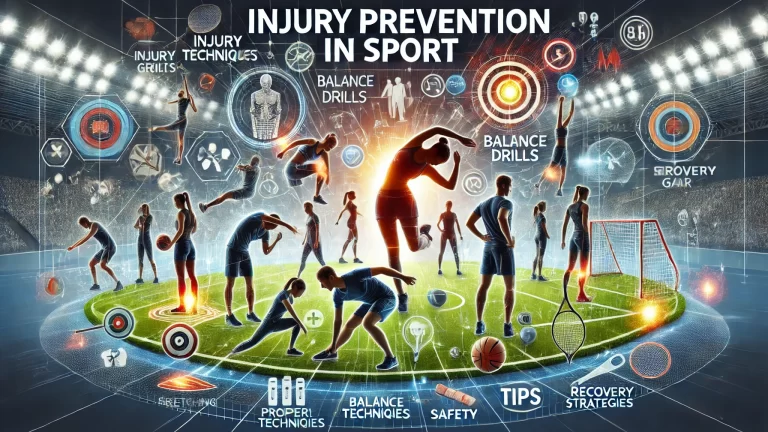Sports offer numerous benefits, from improved fitness to teamwork skills. Yet, the risk of injury looms large for athletes at all levels. This article explores key strategies to keep players safe and healthy, allowing them to enjoy their chosen activities to the fullest.
The Importance of Injury Prevention
Before we dive into specific techniques, let’s consider why injury prevention matters so much in sports. Injuries can sideline athletes for weeks or even months. They may lead to long-term health issues and, in severe cases, end promising careers. By focusing on prevention, we can:
- Enhance performance and consistency
- Reduce healthcare costs
- Boost team morale and cohesion
- Extend athletic careers
- Promote overall well-being
Now, let’s explore the core strategies that form the foundation of effective injury prevention in sports.
Proper Warm-up and Cool-down Routines
A good warm-up primes the body for action, while a proper cool-down aids recovery. These bookends to your workout are crucial for injury prevention.
Warm-ups should gradually raise your heart rate and loosen your muscles. They typically include:
- Light cardio (jogging, jumping jacks)
- Dynamic stretching
- Sport-specific drills
Cool-downs, on the other hand, help your body transition back to its resting state. They often involve:
- Gentle cardio to lower heart rate
- Static stretching
- Self-massage or foam rolling
Both warm-ups and cool-downs improve blood flow, increase flexibility, and prepare your muscles and joints for the demands of your sport. They’re not just formalities – they’re your first line of defence against injuries.
Strength and Conditioning
A well-rounded strength and conditioning program is vital for injury prevention. It builds the muscular support system your body needs to handle the stresses of your sport.
Key components of an effective program include:
- Resistance training
- Core strengthening exercises
- Balance and proprioception work
- Sport-specific conditioning
By addressing these areas, you’ll develop a more resilient body that’s less prone to injury. Remember, strength isn’t just about lifting heavy weights – it’s about creating a body that can withstand the unique demands of your sport.
Proper Technique and Form
Many sports injuries stem from poor form or technique. Whether you’re a runner, weightlifter, or team sport athlete, mastering the correct movements is crucial.
To improve your technique:
- Work with qualified coaches or trainers
- Use video analysis to spot flaws in your form
- Practice deliberately, focusing on quality over quantity
- Be patient – good technique takes time to develop
By moving correctly, you’ll reduce unnecessary stress on your body and lower your risk of both acute and overuse injuries.
Equipment and Environment
The right gear and a safe playing environment are often overlooked aspects of injury prevention. Yet, they play a significant role in keeping athletes safe.
Consider the following:
| Equipment Considerations | Environmental Factors |
|---|---|
| Proper footwear | Playing surface condition |
| Protective gear | Weather conditions |
| Well-maintained equipment | Adequate lighting |
| Correct sizing | Removal of hazards |
Don’t skimp on quality when it comes to your gear. And always assess your environment before play – a moment’s caution can prevent hours of pain.
Rest and Recovery
In our drive to improve, it’s easy to overlook the importance of rest. But recovery time is when your body repairs and strengthens itself.
Effective rest and recovery strategies include:
- Getting adequate sleep (7-9 hours for most adults)
- Taking regular rest days
- Varying workout intensity (not every session should be high-intensity)
- Using active recovery techniques like light exercise or yoga
Remember, rest isn’t laziness – it’s an essential part of your training regimen. Without it, you risk overtraining and increase your chances of injury.
Nutrition and Hydration
What you put into your body directly affects its ability to perform and recover. Proper nutrition and hydration are key to injury prevention.
Focus on:
- Eating a balanced diet rich in whole foods
- Staying hydrated before, during, and after exercise
- Consuming enough protein to support muscle repair
- Getting adequate calcium and vitamin D for bone health
Your body is your most important piece of equipment. Fuel it properly, and it will serve you well on the field, court, or track.
So, injury prevention in sports isn’t about eliminating all risks. Rather, it’s about creating an environment where athletes can push their limits safely. By implementing these strategies, sports enthusiasts at all levels can reduce their injury risk and enjoy their chosen activities for years to come.
Remember, the goal isn’t just to avoid injury – it’s to thrive in your sport. With the right approach to prevention, you’ll not only stay in the game but excel in it. So lace up those shoes, hit the field, and play on – safely and confidently.


